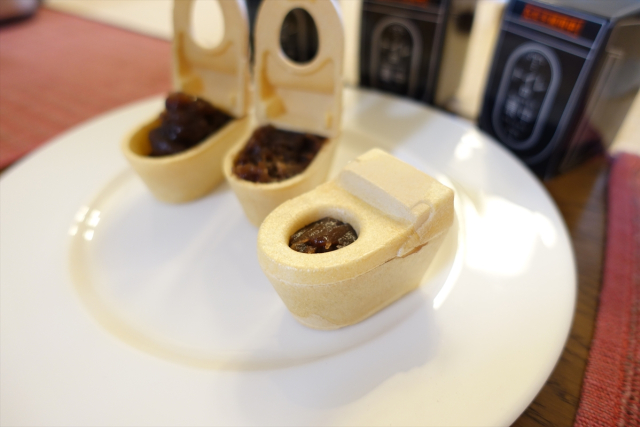
The perfect sweet for a potty mouth.
Our Tokai-based Japanese-language reporter Haruka Takagi had been feeling down in the dumps lately, so she decided to cheer herself up by taking a trip out to Aichi Prefecture, which isn’t far from where she lives.
While she was there, she came across an unusual traditional Japanese sweet that put the spring back into her step and a smile right back on her dial. In fact, it made her laugh so much that she decided to share her secret find with all of us, and now we’re smiling too because it’s a serious treat with a serious sense of humour.
▼ Say hello to the Toilet Monaka.

As far as traditional Japanese sweets go, monaka are right up there at the fashionable, classy end of the spectrum, consisting of adzuki red bean paste sandwiched between two crisp, light wafers made from mochi rice. They’re usually square or triangular, or shaped like beautiful flowers, but the one that Haruka found is…shaped like a toilet.
That doesn’t mean the quality of the treat has been flushed down the drain, however, as the monaka and red bean paste are packaged separately and designed to be combined by the customer before eating. This separate packaging is always the hallmark of a good-quality monaka as it ensures the wafer stays crisp, delivering classy, fresh flavours, despite the toilet humour.
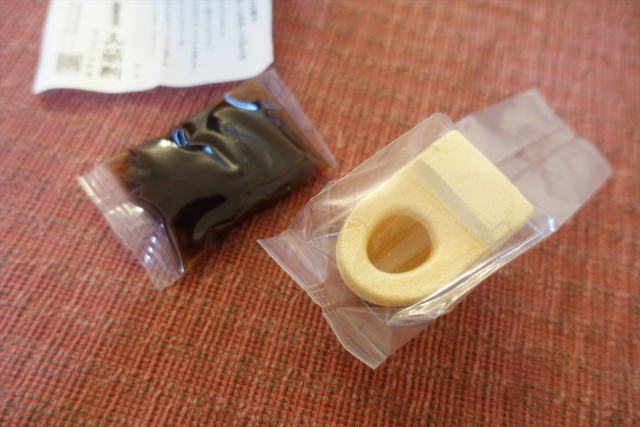
The sweet comes with instructions on how to properly assemble it, so Haruka took note of the advice provided in order to create a realistic-looking visual.

However, when she tried to create a beautiful turd coil in the the toilet bowl, it turned out to be more difficult than expected.
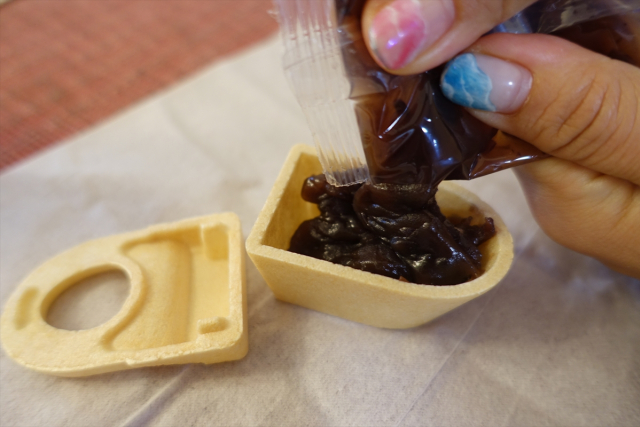
Still, once she was done, the end result was spectacular, both with the toilet lid up and down.

The fun continued when it came to eating the sweet, as she’d formed such an intimate connection with her creation while assembling it that the thought if it being a real toilet was front-and-centre in her mind.
She couldn’t hold back her smile when she bit into it, though, and she was pleasantly surprised to find that it tasted incredibly delicious! It was fresh and classy, much like a top-of-the-range toilet model.
▼ Who knew a toilet could taste so good?
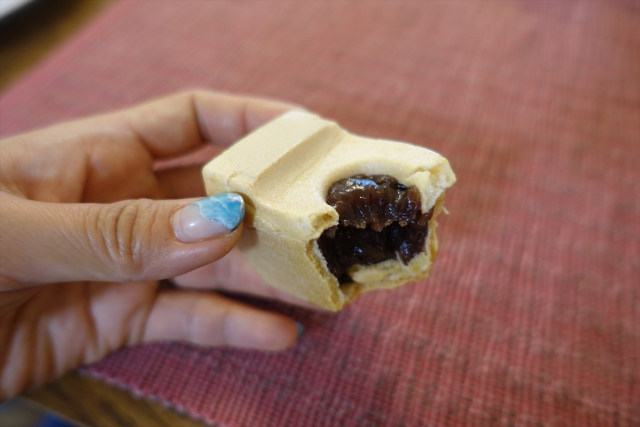
Looking at the packaging, Haruka could see the reason why her toilet tasted so delicious — it had been created by Ohkuramochi, a highly esteemed and longstanding Japanese confectionery shop in Aichi Prefecture.
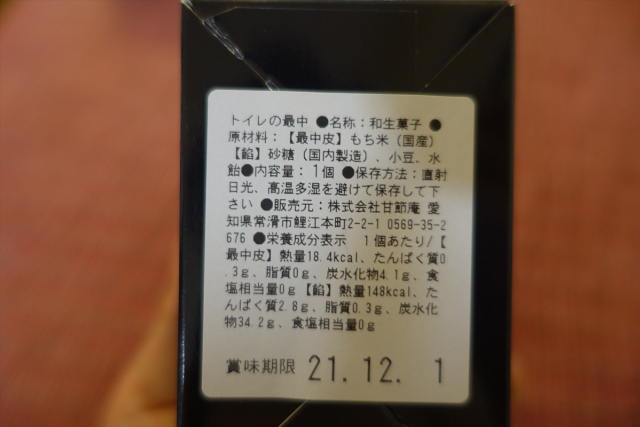
The company who requested the sweet be made was LIXIL, formerly known as INAX, which is a Japanese manufacturer of building materials and housing equipment, including bathrooms and yes, toilets.
▼ Haruka had bought the sweet at LIXIL’s INAX Live Museum in Aichi’s Tokoname City.
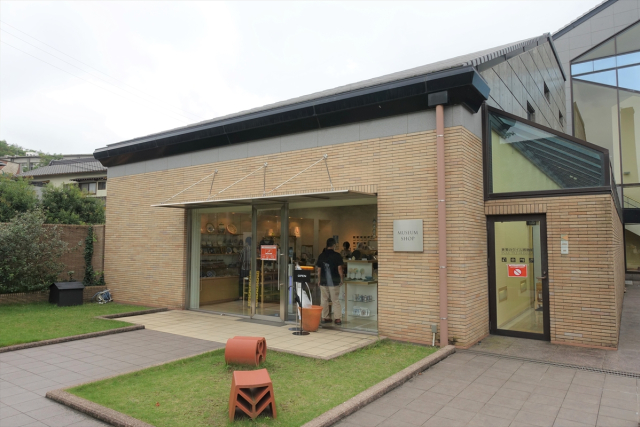
The museum shop only started selling the Toilet Monaka this month, and it’s already created a huge buzz online. We spoke to a spokesperson at the museum to find out more about how they were able to make the sweet look so realistic and impactful, and the first thing they said was:
“I think it’s precisely because we’re a toilet manufacturer that we were able to achieve that.”
They went on to comment on the company’s surprise at the public’s response to the sweet, saying:
“Since the appearance of the sweet is so realistic, we anticipated we would get some sort of response (from the public), but we didn’t expect it to be this great.”
Haruka also found out that the reason why the shape of the Toilet Monaka looks so real is because the design was gleaned from the CAD (computer-aided design) used by the technical team who usually designs toilets.
▼ There’s a lot of serious planning behind this fun sweet, which retails for 324 yen (US$2.96).
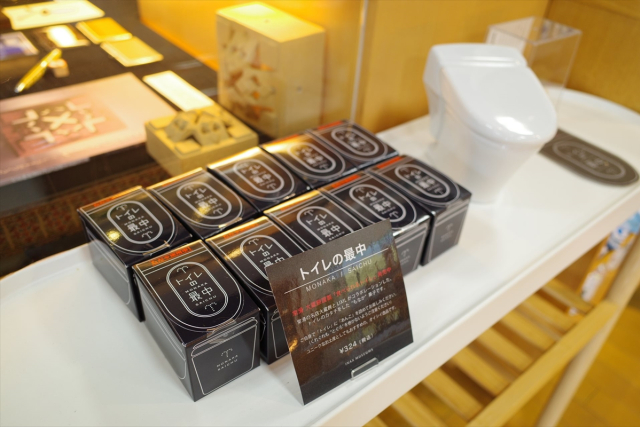
The Toilet Monaka plays on the double-reading of “最中”, which can be read as both “monaka” and “saichu” (meaning “the height of”, or “in the middle of”), which means the “Toilet Monaka” can also be read as “mid-toilet”.
Originally devised as a special souvenir for visitors at the LIXIL Enokido factory in Tokoname, which manufactures toilets, and where general tours are not possible, LIXIL decided to sell the sweet to the general public, saying:
“We wanted people to know more about Tokoname, the city of pottery, so we started selling it. We hope people will come to Tokoname and become interested in pottery through this product.”
Now that our reporter was here in this famous pottery district, she decided to take a closer look at the INAX Live Museum, which is like a pottery theme park with its many pottery-related exhibits. There are also sophisticated buildings and well-maintained garden areas to explore, so if you’re planning a visit, Haruka says you should head to this main building first, where you can pay the 700-yen (US$6.38) admission fee to explore all the areas inside.
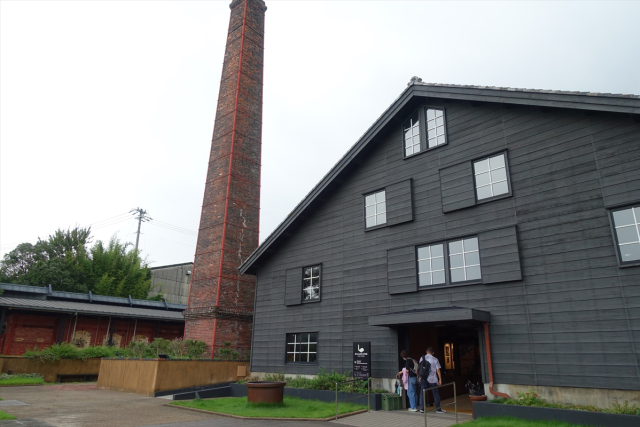
According to Haruka, the admission fee is almost too cheap for the huge amount of exhibits included in the price. Inside the main building, for example, is a real kiln that was once used to make clay pipes, which was a major industry in Tokoname in the past.

The lustre of the clay pipes made at that time was not due to glaze, but the chemical reaction of the components present in salt and clay. Because of this, the inner wall of the kiln is also as glossy as the surface of a clay pipe.
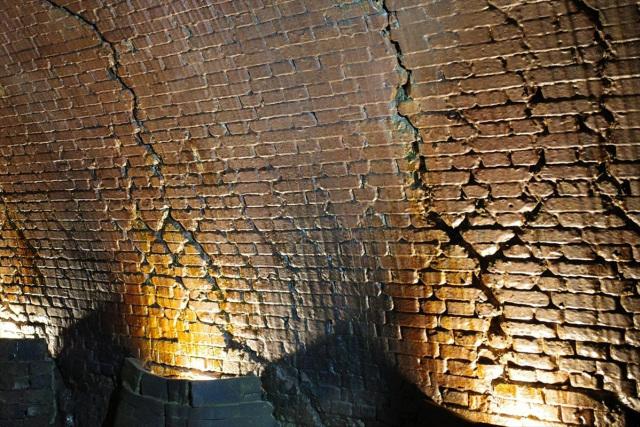
Another highlight at the museum you won’t want to miss is the chance to see a 4,700-year-old Egyptian tile, said to be the world’s oldest tile, located in the Tile Museum.
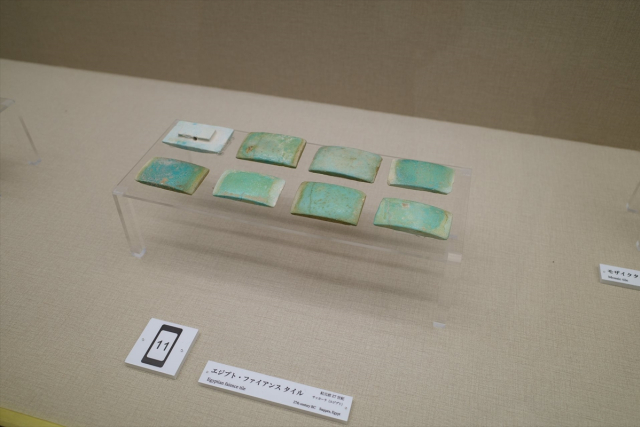
There’s also the rare chance to see the backside of old tiles, and you’ll find a wide range of tiles everywhere, including inside the public bathrooms.
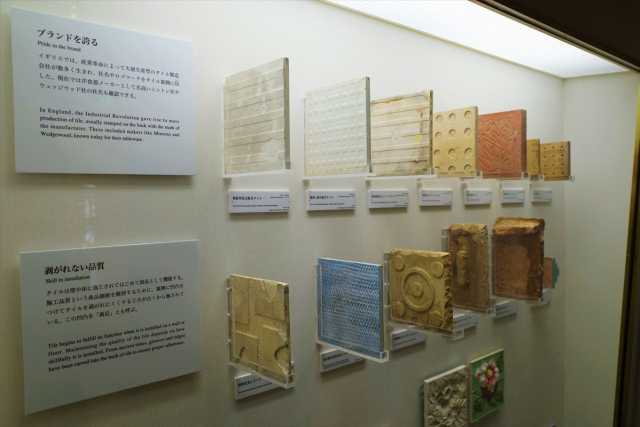
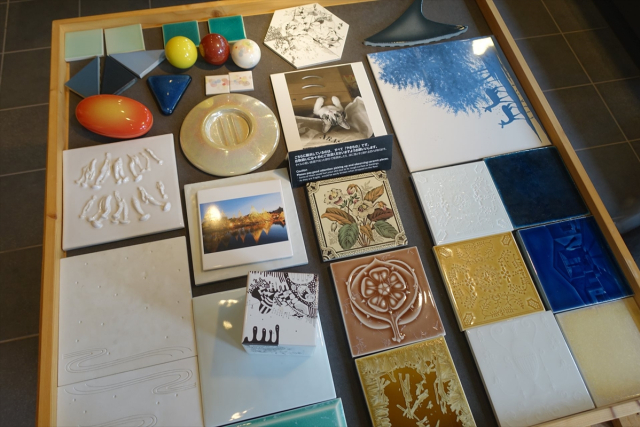
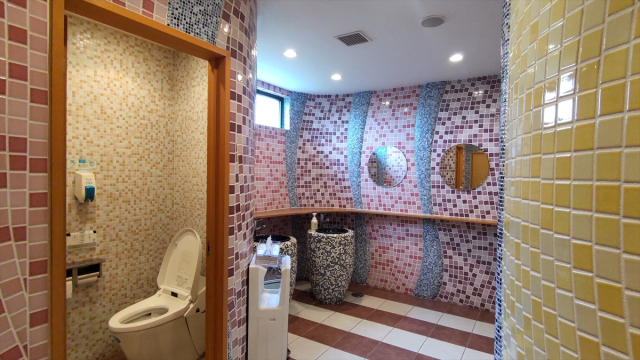
▼ This is a replica of a tiled fireplace used in 18th century Europe, which is believed to have been influenced by Chinese ceramics.
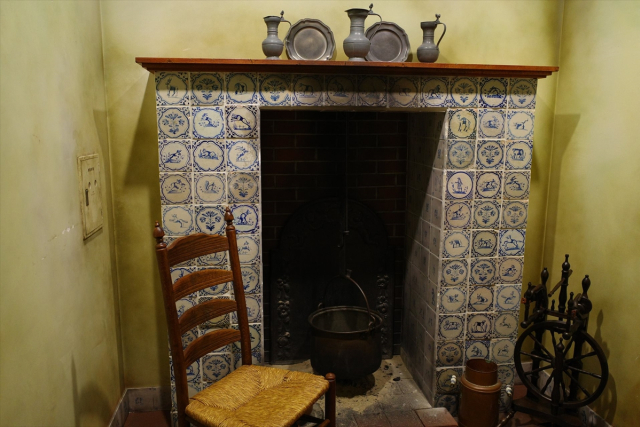
If you get hungry during your museum visit, you can stop by the restaurant to enjoy pizza baked in a kiln…

▼ … And you can step inside an actual kiln, which has a length of 80 metres (262.5 feet).

The Terracotta Park is a lovely place to stroll after lunch, where you can see how pottery was used to decorate the outer walls of buildings.
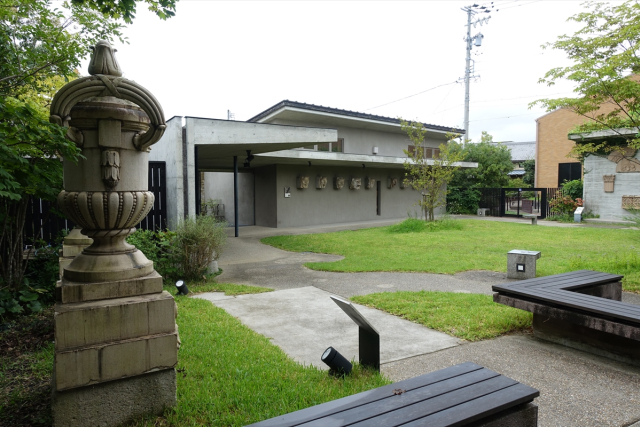
This wall was taken from the Ministry of Home Affairs when it was demolished in 2001 and it’s now preserved here to showcase its beauty and craftsmanship.

▼ These stone demons were removed from the Osaka Building in 1986.
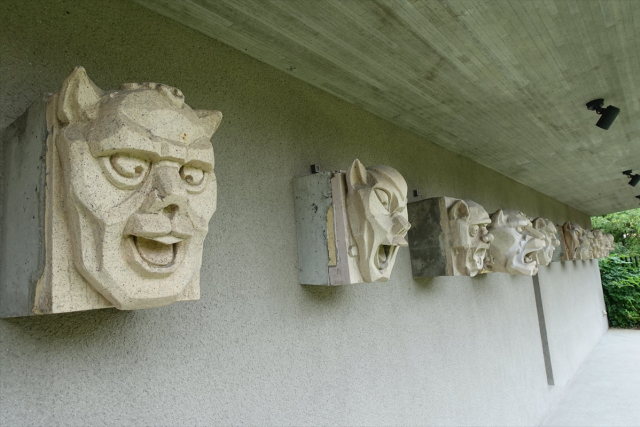
Another highlight you shouldn’t miss is this old toilet bowl collection, which shows how toilets were once decorated for elite members of society.
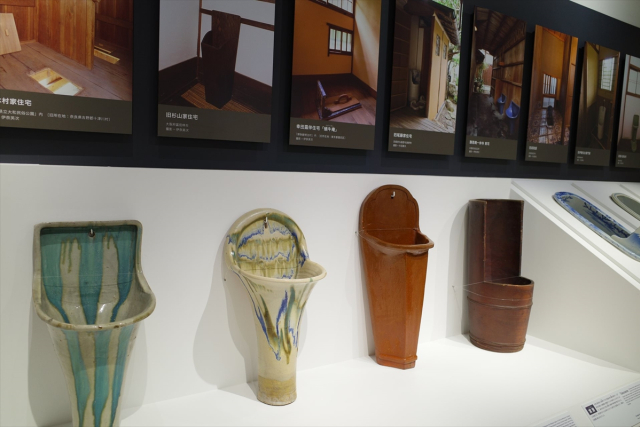
The toilet below is a rare squat-style design with both a large and small cavity. However, it didn’t end up becoming popular, as it was said to be difficult to use.
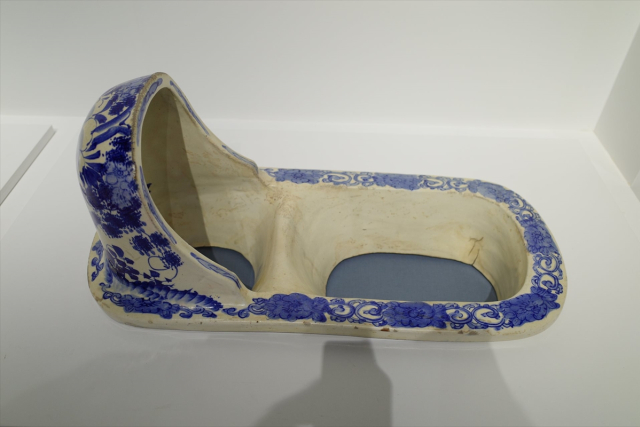
Depending on when you visit, you might be able to catch a limited time exhibition at the museum, like this one called “Disconnect/ Connect [Asao Tokolo x NOIZ] Geometric Pattern Rhythm, Tiling Universe“, which is on until 12 October.
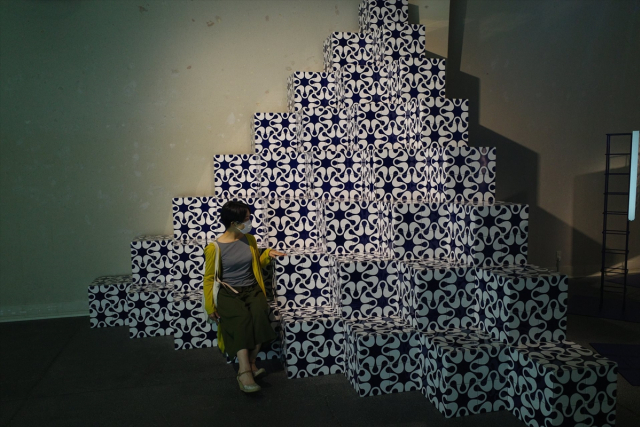
▼ Asao Tokolo recently designed the logo for the Tokyo 2020 Olympics and Paralympics.
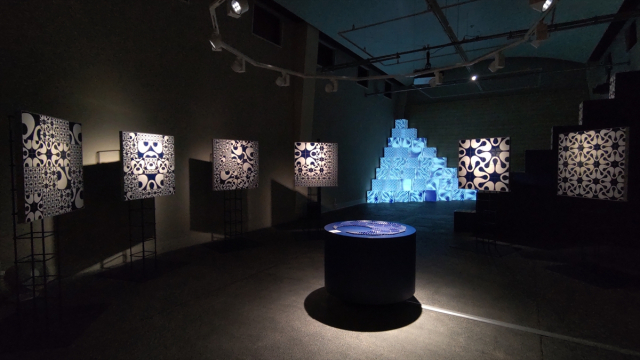
▼ Before you leave the museum, don’t forget to pose for a commemorative photo with a giant mud ball!
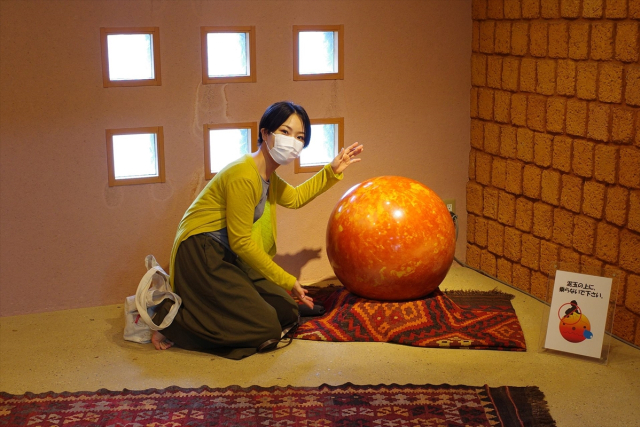
And of course, you’ll want to grab a few of those Toilet Monaka sweets for yourself and your friends back home. The museum shop that sells them can be seen on the left-hand side of the photo below, while the World Tile Museum is in the middle and the restaurant is on the right-hand side of the image.
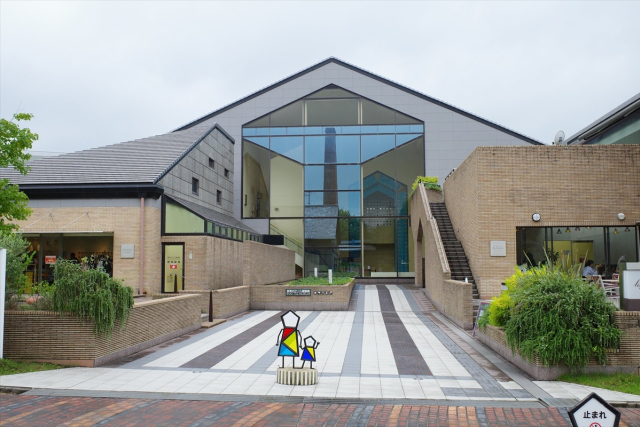
▼ There are many other toilet-related goods and souvenirs to tempt you in the museum shop, including mini porcelain thrones.
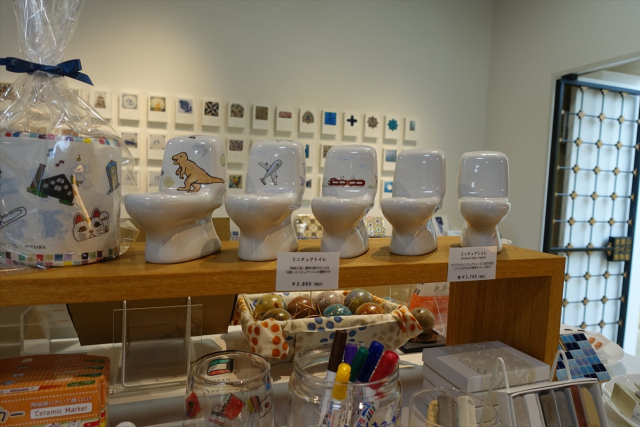
That was just a whirlwind overview of what the museum has to offer, and Haruka was surprised to find herself enjoying it as much as she did. Not only did she get to learn a lot about toilets, she also expanded her knowledge on tiles and ceramics, and even got to see the works of an Olympic logo designer up close!
It was a great day out, and Haruka is now in much better spirits after her trip to the land of tiles and toilets. If you’re ever looking to lift your mood, she highly recommends chomping into a toilet, and if you can’t make the trip out to Aichi Prefecture, you can always try sipping on sweet toilet water or biting into these chocolate toilets from Toto.
Museum Information
INAX Live Museum / INAXライブミュージアム
Address: Aichi-ken, Tokoname-shi, Okueicho 1-130
愛知県常滑市奥栄町1-130
Open: 10:00 a.m.-5:00 p.m. (last entry 4:30 p.m.)
Website
Related: INAX Live Museum
Photos: ©SoraNews24
● Want to hear about SoraNews24’s latest articles as soon as they’re published? Follow us on Facebook and Twitter!

No hay comentarios:
Publicar un comentario